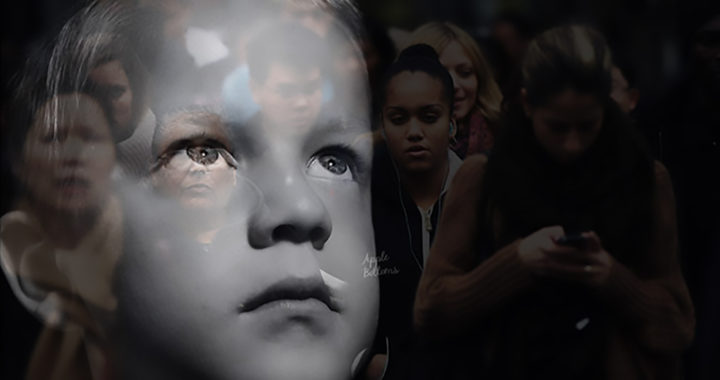Exposure to stressful environments triggers high cortisol levels in children. Remember that stress is a normal biological response and that the body naturally produces and releases cortisol as part of normal biological functions. But certain external or environmental factors and the situation can cause chronic stress and disrupt normal cortisol production.
Several studies have revealed that children living in a stressful environment have prolonged high cortisol levels. This is indicative of chronic stress. Factors that create a stressful environment for children are important to take into consideration. Research suggests that having prolonged high levels of cortisol can have several health implications in children.
The Common Examples Of Stressful Environments For Children: Environmental Factors and Situations That Trigger Stress And High Cortisol Level
Household and Parenting
Bad parenting and household problems collectively represent one of the common stressful environments for children. The study of J. H Suor et al. revealed that children living in low-income households who endured family instability and emotionally distant parents or caregivers had higher cortisol levels than children who only had to endure family instability.
Family instability includes inconsistencies or irregularities in the household environment due to frequent changes in care providers, household members, or residence. Emotional distant parents or caregivers, on the other hand, are not only disengaged but are also harsh toward their children.
Conflict between parents also triggers higher cortisol levels in children. Findings from an earlier study conducted by P. T. Davies et al. showed that children who were very both distressed and involved in response to parental fighting had higher levels of cortisol than children who were not involved in parental conflicts.
Learning Environment
A poor learning environment is also a stress factor in children. Exposure to this environment through interaction with teachers results in excessive production of cortisol. A study conducted by J. A. Lisonbee et al. illustrated several situations responsible for triggering higher cortisol levels in children attending childcare facilities.
For example, children placed within a classroom composed of 20 students had demonstrated higher cortisol levels that were sustained throughout the day as opposed to children placed in a classroom of about 10 students.
The quality of relationships with teachers also creates a stressful environment for children. Children who have a clingy relationship with their teachers also sustained a high level of cortisol from morning to afternoon. Those who are in a conflicted relationship with their teachers have cortisol boost during their one-on-one sessions or personal encounters.
Social and Economic Status
Another one of the common stressful environments for children is socioeconomic status as determined by their quality of life and the overall condition of their immediate surroundings. Researchers Edith Chen, Sheldon Cohen, and Gregory E. Miller found out that prolonged exposure to an impoverished environment as determined by low socioeconomic status results in sustained high levels of cortisol in children.
Specifically, in following a sample of children every six months for two years, the obtained results revealed that cortisol levels nearly doubled in children living under low socioeconomic status compared to children in higher socioeconomic status.
Two psychosocial factors could explain why the socioeconomic status of children affects their cortisol profile over time. According to Chen, Cohen, and Miller, children from this background reported greater perceptions of threats and more family or relational conflicts—two factors that cause emotional and mental distress in children. Remember that stressful situations result in elevated cortisol levels.
Exposure to community violence also triggers the production of cortisol. The study of Shakira Franco Suglia, John Staudenmayer, Sheldon Cohen, and Rosalind J. Wright revealed that school-aged children who live in rough environments and witness violence in urban communities exhibit symptoms of post-traumatic stress.
In studying an urban community-dwelling sample, the researchers also found out that children who scored higher on the stress symptoms had a greater disruption in their cortisol production pattern. Furthermore, these children have higher levels of cortisol over the day, particularly in the afternoon and the evening.
Summary And Takeaway: Understanding How Stressful Environments Affect Children And The Implications Of Existing Research in Child-Rearing
The studies referenced above suggest that certain environmental situations are stressful for children. They also suggest that there are external or environmental factors that induce stress and high cortisol levels in children.
Children in stressful environments are often exposed to poor household conditions due to bad parenting, unfavorable learning environments due to poor relationships with teachers or unconducive learning spaces, rough community due to violence, and/or impoverished living conditions due to low socioeconomic status.
The most important phenomenon to consider is that these environmental factors or exposure to stressful environments result in prolonged or sustained high cortisol levels that last throughout the day and eventually, throughout a week, month, or year—depending on the length of exposure to a particular environmental factor. High cortisol levels in children have been linked to several physical and mental conditions.
It is worth mentioning that these factors are relatively manageable. Stress and cortisol levels of children are controllable once they are removed from a stressful environment.
FURTHER READINGS AND REFERENCES
- Chen, E., Cohen, S., and Miller, G. E. 2009. “How Low Socioeconomic Status Affects 2-Year Hormonal Trajectories in Children.” Psychological Science. 21(1): 31-37. DOI: 1177/095679760935556
- Davies, P. T., Sturge-Apple, M. L., Cicchetti, D., and Cummings, E. M. 2008. “Adrenocortical Underpinnings of Children’s Psychological Reactivity to Interparental Conflict.” Child Development. 79(6): 1693-1706. DOI: 1111/j.1467-8624.2008.01219.x
- Lisonbee, J. A., Mize, J., Payne, A. L., and Granger, D. A. 2008. “Children’s Cortisol and the Quality of Teacher-Child Relationships in Child Care.” Child Development. 79(6): 1818-1832. DOI: 1111/j.1467-8624.2008.01228.x
- Suglia, S. F., Staudenmayer, J., Cohen, S., and Wright, R. J. 2009. “Posttraumatic Stress Symptoms Related to Community Violence and Children’s Diurnal Cortisol Response in an Urban Community-Dwelling Sample.” International Journal of Behavioral Medicine. 17(1): 43-50. DOI: 1007/s12529-009-9044-6
- Suor, J. H., Sturge-Apple, M. L., Davies, P. T., Cicchetti, D., and Manning, L. G. 2015. “Tracing Differential Pathways of Risk: Associations Among Family Adversity, Cortisol, and Cognitive Functioning in Childhood.” Child Development. 86(4): 1142-1158. DOI: 1111/cdev.12376
